#DodgeOmni
Junkyard Find: 1981 Plymouth Horizon Miser
Even while importing Mitsubishi Colt Galants and badging them as Dodge Colts, Chrysler looked to its European outposts to find an additional suitable econo-commuter to sell in North America. The Hillman Avenger aka Plymouth Cricket hadn’t worked out so well, and nor had the Simca 1204, but the Simca/Talbot Horizon under development in the middle 1970s looked very promising. Soon enough, an Americanized version made it into production, making its debut here in the 1978 model year and staying in production all the way through 1990. I’ve documented quite a few of these cars in junkyards, but the super-economical Horizon Miser had eluded me… until now.
Junkyard Find: 1983 Plymouth Scamp
North American sales of Japanese-made small pickups went crazy during the 1970s, with the Detroit Big Three getting in on the action with rebadged Mazdas, Isuzus, and Mitsubishis. Ford and GM eventually created their own Michigan-style small trucks, the Ranger (1983 model year) and S-10 (1982 model year) but where was struggling Chrysler— in a frenzy trying to get the new K-Cars out the door— supposed to find enough money to develop a new truck design from scratch? Fortunately, Volkswagen had shown that front-wheel-drive worked well enough in little pickups, and the versatile Omnirizon platform proved suitable for a bit of El Camino-ization. Here’s the result, found in a Denver yard last summer.
Junkyard Find: 1980 Plymouth Horizon
After the Oil Crisis of 1973, Chrysler didn’t have the resources needed to design and build a subcompact economy car from scratch. Fortunately, Chrysler’s Japanese ally, Mitsubishi, was willing to ship over plenty of cars to be sold as Dodge and Plymouth Colts (we will not discuss the wretched Plymouth Cricket aka Hillman Avenger at this time). The Colt didn’t get front-wheel-drive until 1979, though, so Chrysler USA turned to Chrysler Europe for the Simca-designed Horizon platform and began selling Dodge Omnis and Plymouth Horizons in 1978.
Here’s an early Horizon in a Denver self-service yard.
This Was as Hot as the Dodge Omni Got, and It Can Be All Yours
The Dodge Omni/Plymouth Horizon twins didn’t get much respect in the 1980s, and even today’s hipsters – who’ll cling to anything avante-garde or ironic – failed to bestow them with latter-day reverence.
Well, never mind the haters. If you’re in Monterey, California on Aug. 19, and you have a hankering to spend a seemingly ludicrous amount of money on a 30-year-old econobox, your day has come.
RM Sotheby’s plans to auction a 1986 Dodge Omni GLHS, once owned by legendary tuner Carroll Shelby. This was the original hot hatch, with only 500 of the Shelby-tuned, turbocharged and intercooled Omni variants build before the model’s swan song.
Junkyard Find: 1989 Plymouth Horizon America
The Dodge Omni/Plymouth Horizon (collectively known as the Omnirizon) was based on a Simca design originally intended for European use and was Chrysler’s first American built, front-wheel drive, economy car. The Omnirizon was cheap, got the job done, and sold very well, staying in the American marketplace from 1978 through to 1990 with few major changes.
We’ve seen an early Horizon and now I’ve spotted this late one in a California self-service yard.
Junkyard Find: 1988 Dodge Omni
Members of the Chrysler L-body family, based on the Chrysler Europe/Rootes Group/Simca-derived “Omnirizon,” are not uncommon in American wrecking yards these days; why, we just saw this ’87 Dodge Shelby Charger a few weeks ago. However, the true Omnirizon— the Dodge Omni and Plymouth Horizon— those are getting more and more rare as the 21st century grinds on. We’ve seen this first-year-of-production ’78 Horizon, this last-year-of-production ’90 Horizon, and a few in between, and now I’ve found this grimy-looking ’88 Omni in a frozen Denver yard.
Junkyard Find: 1987 Dodge Shelby Charger
Who would have thought, in the late 1960s, that the future held front-wheel-drive Chargers, based on a French platform? Or that Carroll Shelby’s name would be on some of those cars? The Shelby Chryslers aren’t worth a whole bunch today, which means that non-perfect ones show up in cheap self-serve wrecking yards all the time; we’ve seen this ’87 Daytona Shelby Z, this ’86 Omni GLH, this ’85 Shelby Charger, and this ’84 Shelby Charger so far, and now I’ve spotted a very rough but still recognizable ’87 Shelby Charger in the San Francisco Bay Area.
Junkyard Find: 1990 Plymouth Horizon
No, that’s not a typo— Chrysler made the Simca-derived Omnirizon all the way until the 1990 model year. I’ve been looking for a final-year example of an Omni or Horizon for quite a while now, and I finally found this one in a Denver self-serve yard over the weekend.
Junkyard Find: 1987 Plymouth Horizon
Chrysler did pretty well selling Mitsubishi-derived products in North America, but the only platform from their European operations that was a hit over here was the Simca-based Omnirizon. These cars had a lengthy production run and you still see a fair number in wrecking yards these days; in this series so far, we’ve had this ’78 Horizon, this ’83 Dodge Rampage Prospector, this ’84 Turismo, this ’85 Shelby Charger, this ’86 Omni, and this this Shelby-ized ’86 Omni GLH. I’d really like to find a final-year-of-production 1990 model Omnirizon, but so far this ’87 is the newest example I’ve seen in the wrecking yard.
Junkyard Find: 1983 Dodge Rampage Prospector
Even as the K-cars became a huge success, Chrysler didn’t give up on the Simca-derived Omnirizon platform. In fact, the 2.2/2.5 engine helped extend the Omnirizon’s life until the 1990s. We’ve seen a fair number of Omnirizon-based Junkyard Finds, including this ’78 Horizon, this ’84 Turismo, this ’85 Shelby Charger, this ’86 Omni, and this this Shelby-ized ’86 Omni GLH, and now I’ve managed to find one of the rarest of all: the pickup-truck Omnirizon!
Junkyard Find: 1978 Plymouth Horizon
Yesterday’s Junkyard Find was one of the better-known examples of the Simca-based “Omnirizon” platform, and you still see 80s Dodge Chargers here and there. What you won’t see often is today’s Junkyard Find, a first-year Plymouth Horizon. I found this one languishing in a Denver self-serve junkyard.
Junkyard Find: 1986 Dodge Omni GLH
You’d think that the Shelby-ized Dodges of the 1980s would be sought-after collector’s items nowadays… but you’d be wrong. The Omni GLH/GLHS had to be the best performance-per-dollar deal of any new car you could buy during the mid-to-late 1980s, but its humble Simca origins and disposable nature mean that surviving examples aren’t worth fixing up once they get in rough condition.



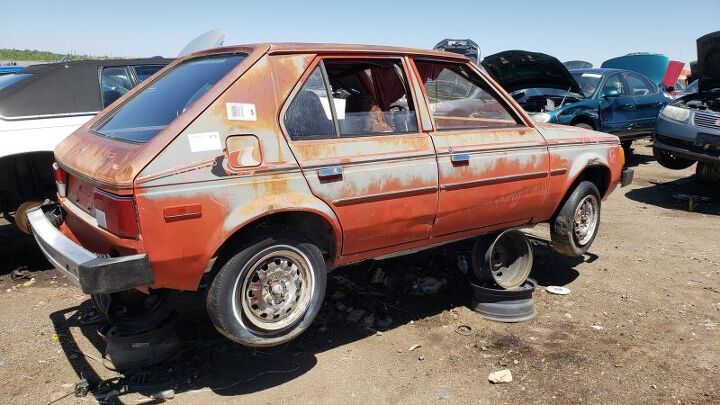



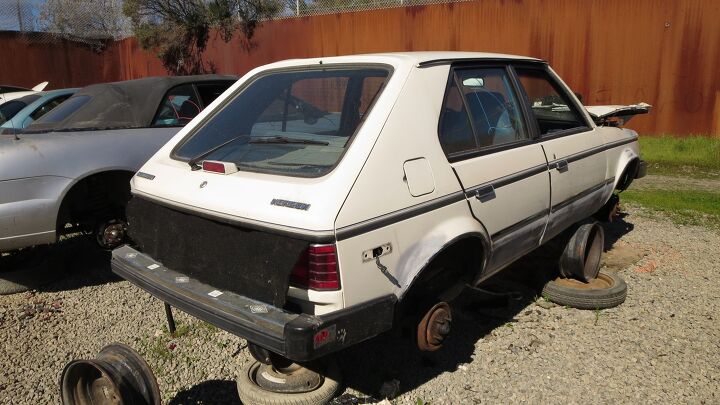
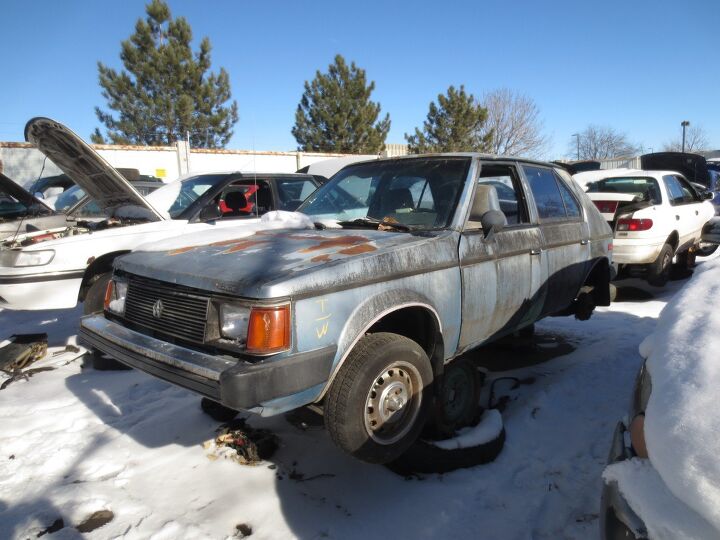
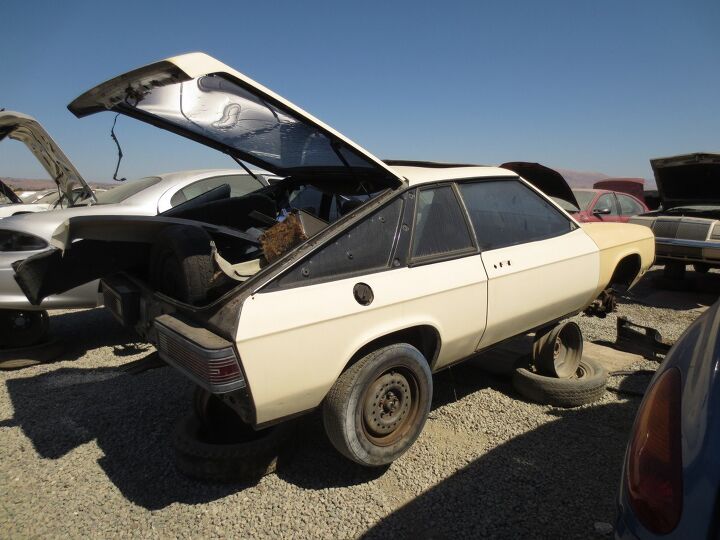
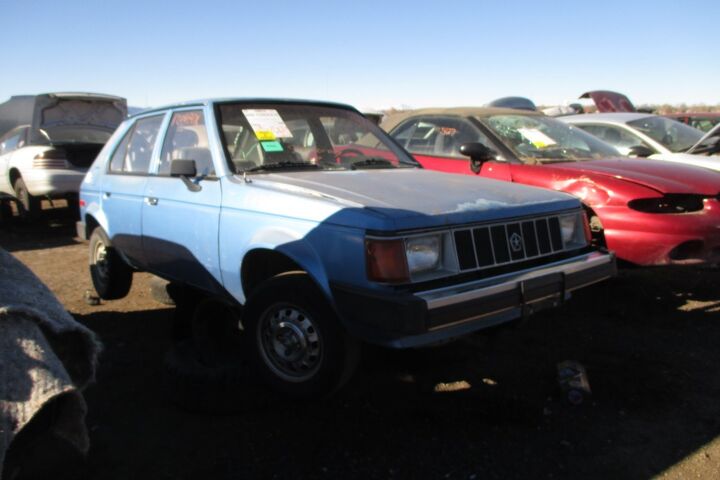
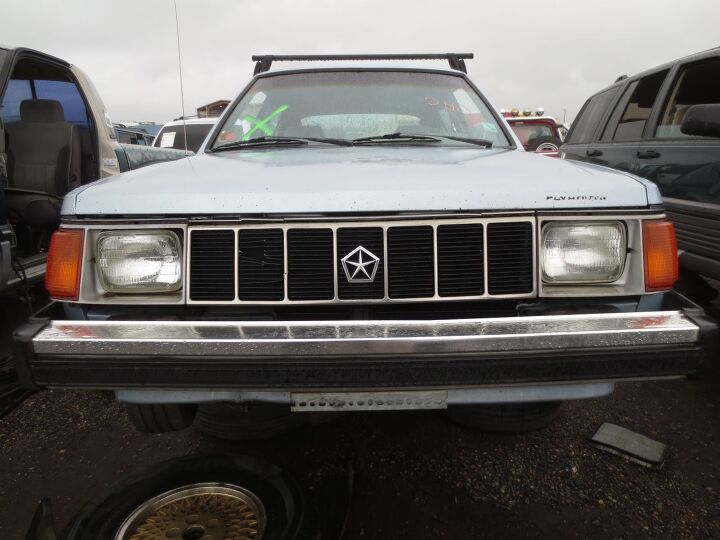

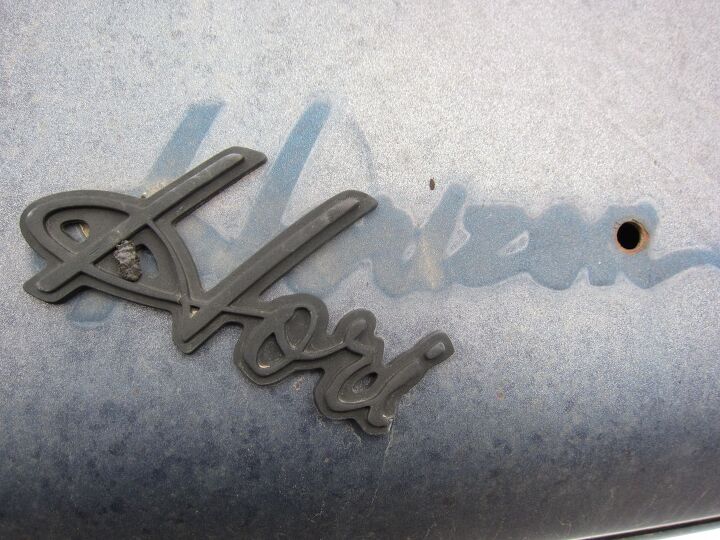













Recent Comments